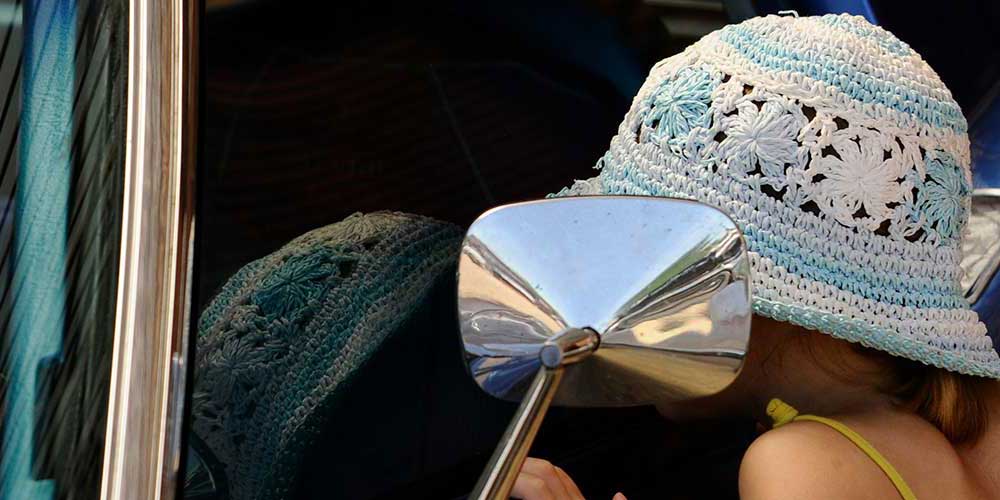By Robert Tate, Automotive Historian and Researcher
Images Courtesy of Chrysler Archives and Ron Konopka
Published 5.10.2023
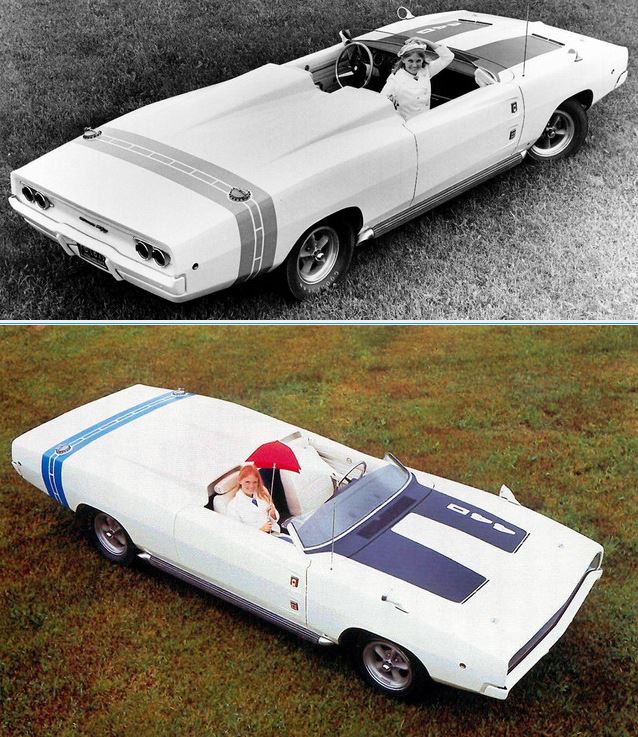
If there is one Dodge design that made automotive history during the 1960s, it was the 1968-1970 Dodge Charger concept, a rarely talked about concept that many people do not remember.
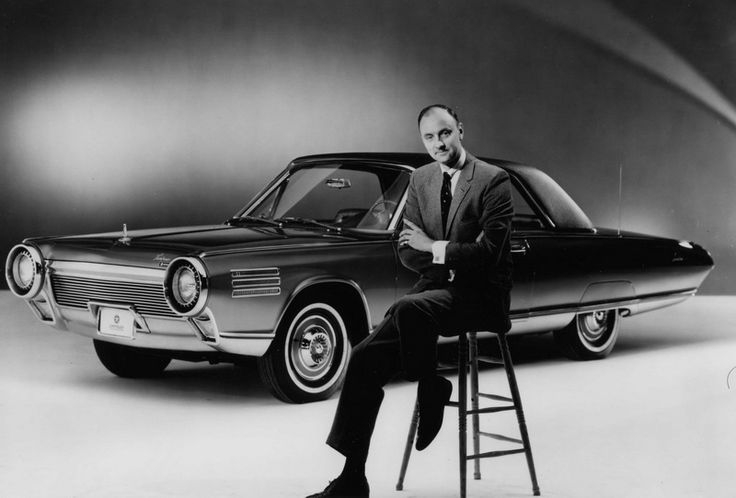 Elwood Engel, VP of Chrysler Design (Chrysler Archives)
Elwood Engel, VP of Chrysler Design (Chrysler Archives)
This model began as the no name concept car for Chrysler’s Dodge division under the direction of Elwood P. Engel (1917 - 1986). It was conceived as a fun car, or “an idea car” as Engel put it. The concept car was born out of a group of Dodge designers gathered around a 1968 Dodge Charger in the studio discussing different styling possibilities using the main body shape as a starting point for an interesting new concept model. “The Dodge Charger is one of our really exciting cars,” Engel said. “We wanted to know what it would look like without a roof.”
 Black and white views of the Car with No Name Dodge concept (Chrysler Archives)
Black and white views of the Car with No Name Dodge concept (Chrysler Archives)
Dodge Public Relations introduced the concept in a press release carrying the headline “The Car with No Name is Really a Charger.” The concept offered a standard 440-cubic-inch engine with a rally suspension and automatic transmission. It was customized by Mike and Larry, the Alexander Brothers of Detroit.
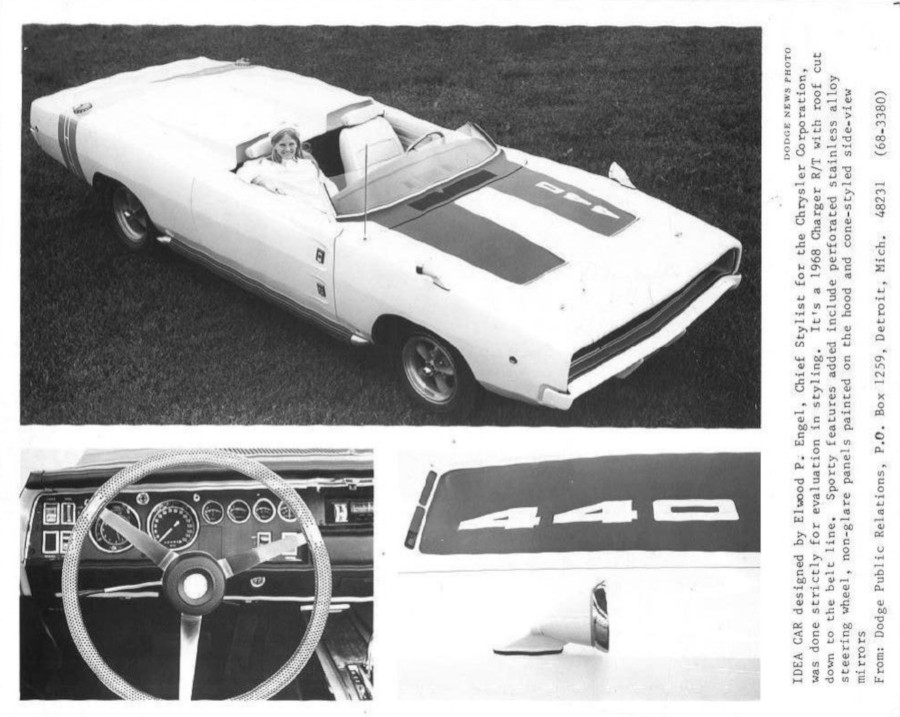 Some other views of the 1968 Car with No Name Dodge concept (Chrysler Archives)
Some other views of the 1968 Car with No Name Dodge concept (Chrysler Archives)
For some reason, a name was never used during its styling and development. In the beginning, some Chrysler designers called the concept “White Beauty” or “Charger for El,” as in Elwood Engel. The model was cut down at the beltline along with the back seat area, which was covered as customizing began on the design by Bruce Hatch. The lower part of the body was a great looking Dodge Charger design enjoyed by car enthusiasts. Engel also contributed to the design, adding the bumble-bee strips that wrapped around the back end. The trunk lid and door handles were removed. To open the door, the driver had to reach inside the car since there was no top. There was no glass in the side doors, and the hood indentations were inspired by great looking aircraft designs that emphasized speed and performance.
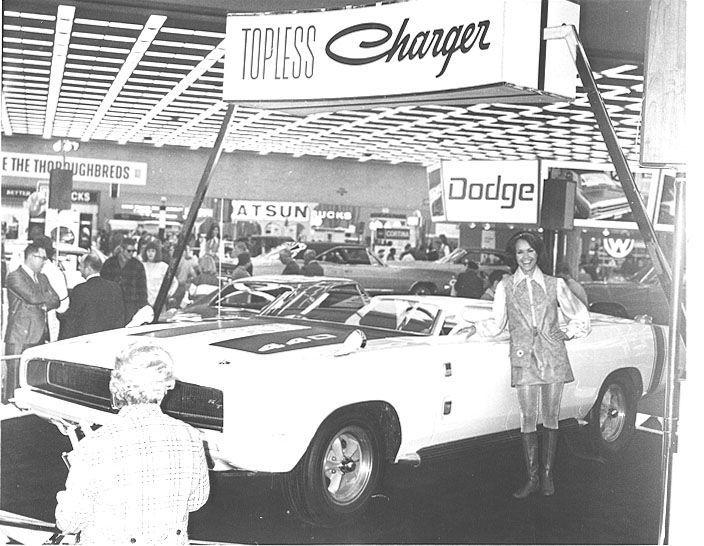 1968 Dodge Charger Topless concept at an auto show (Chrysler Archives)
1968 Dodge Charger Topless concept at an auto show (Chrysler Archives)
The model was introduced at the auto-show as the “Topless Charger.” A drawback to this great looking concept was that it could only be driven on sunny days because the windshield glass was cut down and there was no top for the driver or passenger. The model could only accommodate two passengers. The interior was highlighted by twin bucket seats with head rests with an all-white upholstery. Additional sport features included a perforated stainless alloy steering wheel with a set of great looking mirrors and other stylish features.
Regarding the exterior, the concept was painted all white with blue trim. The bumpers were de-chromed and also painted white. The hood and trunk lid were both painted in a non-glare black tone.
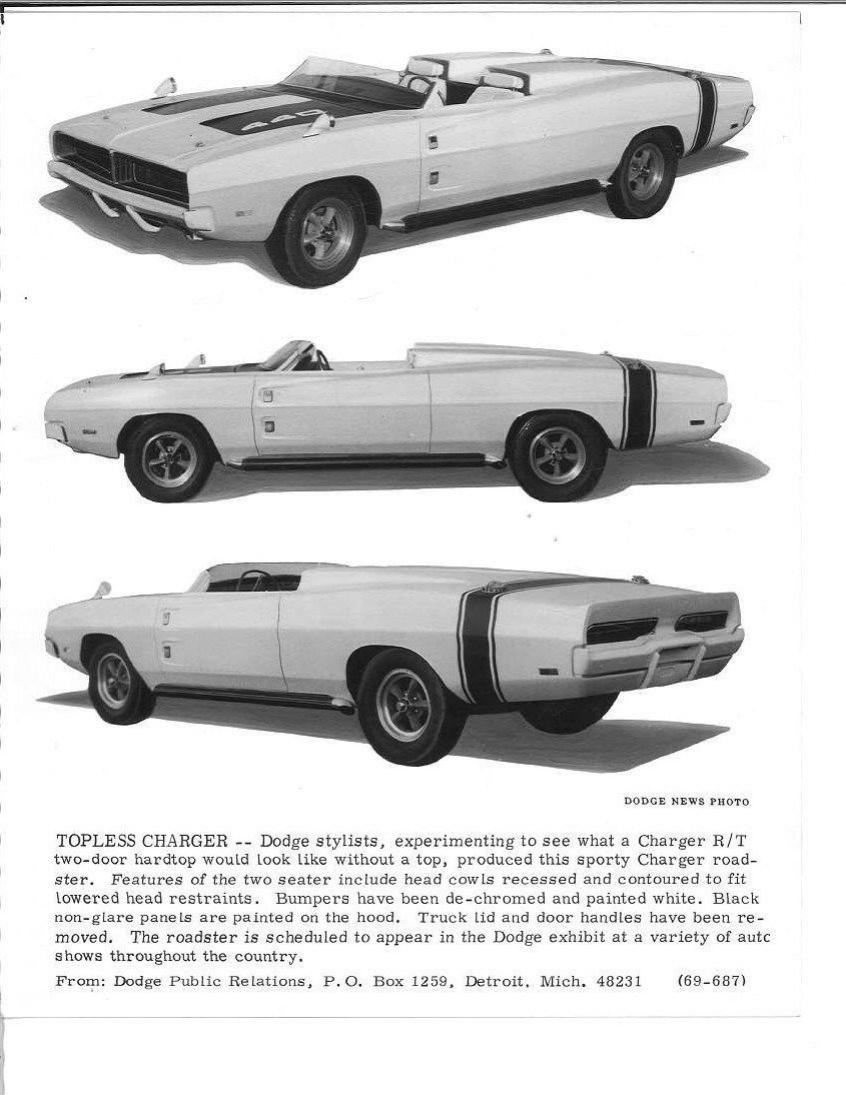 A PR photo of the 1969 Dodge Charger concept model (Chrysler Archives)
A PR photo of the 1969 Dodge Charger concept model (Chrysler Archives)
When researching the Dodge concept, Engel would sometimes drive it around town to promote the new 1968 Dodge Charger. He would occasionally take the model home but only on sunny days.
The 1968 concept was upgraded to the sleek and popular 1969 model with very little change. The rear taillights were changed to represent the 1969 Dodge Charger model.
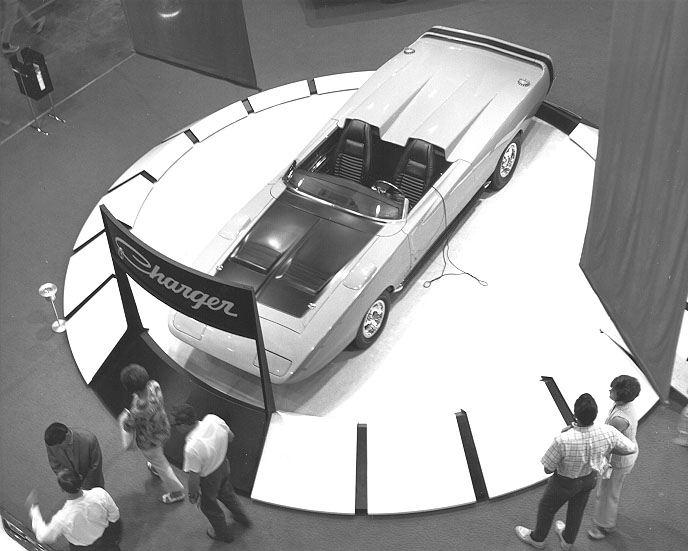 The 1970 Dodge Super Charger concept at an auto show (Chrysler Archives)
The 1970 Dodge Super Charger concept at an auto show (Chrysler Archives)
The Dodge concept was so popular that it was redesigned by George Busti of Creative Customs for 1970. The blue stripes were removed, and a built-in nose spoiler was added. The 1970 Dodge Super Charger was painted in a bright orange dubbed “Hemi Orange” that was also used on the production Dodge Charger models. The model offered a hood area that was painted black. It also came with vacuum-operated louvers along with very tastefully designed five-spoke American Racing wheel covers. A newly designed rear end spoiler was added, which could be electronically adjusted by the driver. The 1970 Dodge Super Charger was a big hit among racing fans who enjoyed the front-end design.
 The 1969 Dodge Charger, along with the 1964 Charger concept today.
The 1969 Dodge Charger, along with the 1964 Charger concept today.
In conclusion, the Dodge concepts were very uniquely styled cars designed under the influence of Elwood Engel, who served as Chrysler Corporation’s design chief from 1961to 1974. These models are still around today and remain very popular among Dodge enthusiasts. I would like to give special thanks to my good friend Ron Konopka, automotive historian and collector, who was there when this design was conceived inside the Dodge studio and contributed to this story.
Bibliography
1968 Dodge Public Relations. “Car with No Name is Really a Charger.”
Fetherston, David and Thacker, Tony. “Concept Cars Chrysler 1940-1970.” Brooklands Books, LTD, England.
Chrysler View Scope. “Fancy Fun Car.” A look around the Corporation, January 1969.


